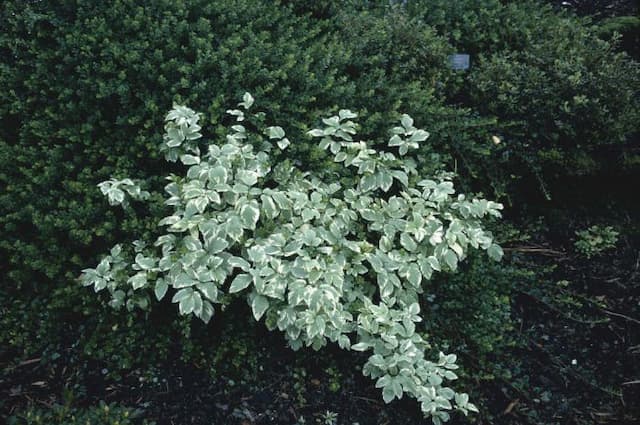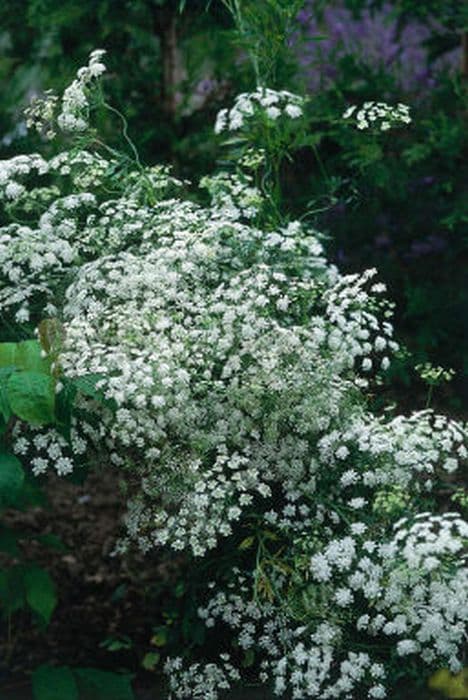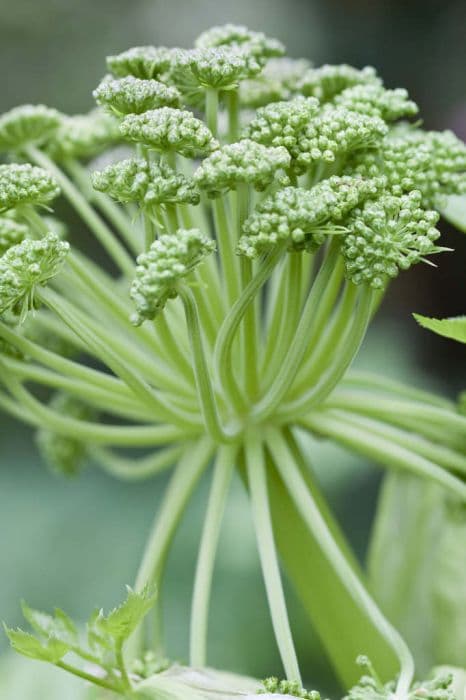Samphire Crithmum maritimum

ABOUT
Crithmum maritimum, commonly known as sea fennel, is an attractive perennial plant that often plays a role in coastal landscapes. It is characterized by a vibrant green, bushy appearance, and it's well adapted to saltwater conditions. The sea fennel boasts fleshy, finely divided leaves that resemble those of a carrot or fern. These leaves are aromatic, emitting a pleasant fragrance when crushed or brushed against, which often draws associations with dill or fennel in terms of smell. From midsummer to early autumn, sea fennel produces clusters of tiny, yellowish-green flowers which bloom in umbrella-like formations known as compound umbels. Upon pollination, these flowers give way to small, green, ridged seeds that will eventually dry and turn brown at the end of the season. The colorful contrast between the leaves and the flowers makes sea fennel a distinctive presence in natural surroundings. Despite its delicate look, sea fennel is a hardy plant, owing its resilience to the climate it is accustomed to—often found on cliffs and rocky shores where other plants may struggle to survive. It has a deep root system that helps it access fresh water and nutrients, anchoring it firmly in the coastal soils where it thrives. Overall, sea fennel has an aesthetic appeal that makes it sought after for ornamental purposes and for use in various culinary applications owing to its unique flavor profile.
About this plant
 Names
NamesSynonyms
Rock Samphire, Sea Fennel, Samphire, Crest Marine, Rock Fennel, Sea Asparagus.
Common names
Crithmum maritimum L.
 Toxicity
ToxicityTo humans
Crithmum maritimum, commonly known as samphire, is not considered toxic to humans. In fact, it is often used as a food source and is popular in culinary circles for its crisp texture and salty flavor. However, like with any food, some individuals might experience food sensitivity or allergic reactions, which could include symptoms like gastrointestinal upset or skin reactions, but this is rare. There are no common toxic effects associated with ingesting samphire for the general population.
To pets
Samphire (Crithmum maritimum) is not commonly listed as a toxic plant to pets such as dogs and cats. There is limited information on its toxicity in pets, but it is not generally known to cause poisoning when ingested. However, pets may have individual sensitivities or allergies, and eating unfamiliar plants can sometimes lead to gastrointestinal upset such as vomiting or diarrhea. As with any non-traditional food, it is best to introduce samphire or any other plant material to pets cautiously and in moderation. If an adverse reaction is noticed after ingestion, contacting a veterinarian is recommended.
 Characteristics
CharacteristicsLife cycle
Perennials
Foliage type
Evergreen
Color of leaves
Green
Flower color
Yellow
Height
1-2 feet (30-60 cm)
Spread
1-2 feet (30-60 cm)
Plant type
Herb
Hardiness zones
8
Native area
Mediterranean
Benefits
 General Benefits
General Benefits- Rich in Nutrients: Crithmum maritimum, commonly known as sea fennel, is a source of vitamins and minerals such as vitamin C, iron, iodine, and magnesium.
- Culinary Uses: Sea fennel is used as a herb or vegetable in cuisine, particularly in Mediterranean dishes, for its aromatic and slightly salty flavor.
- Skin Care: The extracts of sea fennel are incorporated into skin care products due to its moisturizing and conditioning properties.
- Ornamental Plant: With its distinctive feathery leaves and clusters of small yellow-green flowers, sea fennel can be an attractive addition to coastal gardens.
- Coastal Ecosystem Support: As a native coastal plant, it helps stabilize sand dunes and coastal areas, supporting the local ecosystem.
- Salt Tolerance: Sea fennel is highly salt-tolerant, making it suitable for growth in saline environments where other plants may struggle.
 Medical Properties
Medical Properties- Diuretic: Samphire has traditionally been used to stimulate urine production, which can help in kidney and bladder conditions.
- Digestive aid: It is believed to have digestive stimulant properties, aiding in digestion and relieving flatulence.
- Antiscorbutic: Due to its high vitamin C content, samphire has been used to prevent or treat scurvy, a disease caused by vitamin C deficiency.
 Air-purifying Qualities
Air-purifying QualitiesThis plant is not specifically known for air purifying qualities.
 Other Uses
Other Uses- Rock gardens and coastal landscaping: Samphire is often used in rock gardens and coastal landscaping due to its tolerance of dry and salty conditions, making it an attractive and hardy choice for such environments.
- Culinary dye: The intense green color of samphire can be used to naturally dye foods, adding a touch of color to pastas or breads.
- Decorative garnish: Its delicate, succulent leaves and stems can be used as an attractive garnish for a variety of dishes, adding visual appeal and a hint of saltiness.
- Flavoring liquor: Samphire's unique salty and herbal taste can be infused into spirits such as vodka or gin to create interestingly flavored alcoholic beverages.
- Veterinary use: In some traditional practices, samphire is used as a feed supplement for livestock to provide essential minerals and nutrients.
- Aquariums: Samphire can be incorporated into brackish water aquarium setups as an ornamental plant that can tolerate the conditions of the aquaria.
- Erosion control: It can be planted to help stabilize soil in areas prone to erosion, particularly in coastal zones where its salt tolerance is an advantage.
- Photography: Due to its unique structure and habitat, samphire serves as a popular subject for photographers specializing in botanical and landscape imagery.
- Botanical research: Samphire is studied in the field of botany for its ability to survive in harsh coastal environments, providing insights into plant adaptability and resilience.
- Crafts and flower arrangements: Dried samphire can be used in floral arrangements and crafts, providing a distinct texture and shape that can complement other materials.
Interesting Facts
 Feng Shui
Feng ShuiThe plant Crithmum maritimum, commonly known as sea fennel, is not used in Feng Shui practice.
 Zodiac Sign Compitability
Zodiac Sign CompitabilitySea fennel is not used in astrology practice.
 Plant Symbolism
Plant Symbolism- Resilience and Survival: Crithmum maritimum, commonly known as sea fennel, is often associated with resilience and survival because it thrives in harsh coastal conditions where few other plants can survive.
- Adaptability: Sea fennel symbolizes adaptability due to its ability to grow in rocky, saline environments, adapting to high levels of salt and lack of water.
- Renewal and Restoration: Given its habitat in coastal areas, sea fennel is also a symbol of renewal and restoration, representing the regenerative power of the sea and its influence on land.
- Cleansing and Purification: The plant is believed to have purifying properties, and thus symbolizes cleansing, reflecting its traditional use in herbal medicine to detoxify and refresh the body.
 Water
WaterSamphire, commonly known as sea fennel, prefers soil that is moist but well-drained, and it should be watered sparingly to reflect its natural coastal habitat. During growth periods in spring and summer, water every one to two weeks with approximately one quart of water per plant, ensuring the soil has started to dry out between waterings. In a cooler climate or during the fall and winter months, reduce watering frequency to once every three to four weeks, provided that the plant shows no signs of dehydration like wilting or browning tips. Overwatering can lead to root rot, so it's critical to avoid letting the plant sit in waterlogged soil.
 Light
LightSamphire thrives in full sun conditions, reflecting its natural preference for the bright, open coastal environments where it originates. It is best positioned in a spot where it will receive at least six hours of direct sunlight daily. If grown indoors, place sea fennel by a south-facing window to ensure it gets sufficient light.
 Temperature
TemperatureSea fennel can tolerate a wide range of temperatures but prefers a range between 50°F and 75°F, which simulates its natural coastal climate. It can survive temperatures as low as 28°F but may be damaged by prolonged frost, and high temperatures over 86°F might stress the plant, particularly if combined with dry conditions.
 Pruning
PruningPruning sea fennel is generally done to remove dead or damaged foliage and to maintain its shape. It's best to prune lightly in late winter or early spring before new growth begins. Typically, cutting back one-third of the older growth is sufficient to encourage fresh growth and improve air circulation within the plant.
 Cleaning
CleaningAs needed
 Soil
SoilSamphire, commonly known as sea fennel, thrives best in a well-draining soil mix with sandy or rocky components to mimic its natural coastal habitat. A mixture of cactus potting soil with added perlite or gravel promotes good drainage. Sea fennel prefers slightly alkaline conditions, so aim for a soil pH around 8.0.
 Repotting
RepottingSea fennel or samphire does not require frequent repotting and can typically be repotted every 2-3 years. It is important to ensure that the new pot has adequate drainage and is only slightly larger than the previous one.
 Humidity & Misting
Humidity & MistingSea fennel or samphire is adapted to coastal climates and thus tolerates a wide range of humidity levels. It does well in moderate to high humidity but can also tolerate dryer conditions due to its native seaside habitat.
 Suitable locations
Suitable locationsIndoor
Place sea fennel in bright light and well-draining soil.
Outdoor
Plant sea fennel in full sun and well-drained soil.
Hardiness zone
Sea fennel is suitable for USDA hardiness zones 7-10.
 Life cycle
Life cycleCrithmum maritimum, commonly known as sea fennel or rock samphire, begins its life cycle when seeds germinate in well-drained, rocky or sandy soil, typically in coastal areas. Seedlings develop taproots and fleshy, divided leaves that are adapted to withstand the salty, often arid habitat. The plant matures and forms umbels of small yellow-green flowers by its second or third year, which bloom in late summer to attract pollinators. After pollination, these flowers develop into seeds by late summer or early autumn. Seeds are dispersed by wind, water, or animals, enabling the plant to colonize nearby suitable habitats. Sea fennel is a perennial herb, and after setting seed, it enters a phase of dormancy over the winter months, resuming growth in the spring from the same root system.
 Propogation
PropogationPropogation time
Spring-Early Summer
Propogation: Rock samphire, or Crithmum maritimum, is typically propagated from seed. Seed propagation is often done in the spring, when temperatures begin to rise, providing a suitable environment for germination. To propagate rock samphire by seed, sow the seeds thinly across the surface of a well-drained, light potting mix. Barely cover the seeds with soil, as they need light to germinate. The seeds should be kept moist but not waterlogged, and placed in a location with plenty of indirect sunlight. Germination can take between two to four weeks. Once seedlings have developed and are large enough to handle, they can be transplanted to their final growing positions, making sure they are spaced sufficiently to allow for mature growth.









